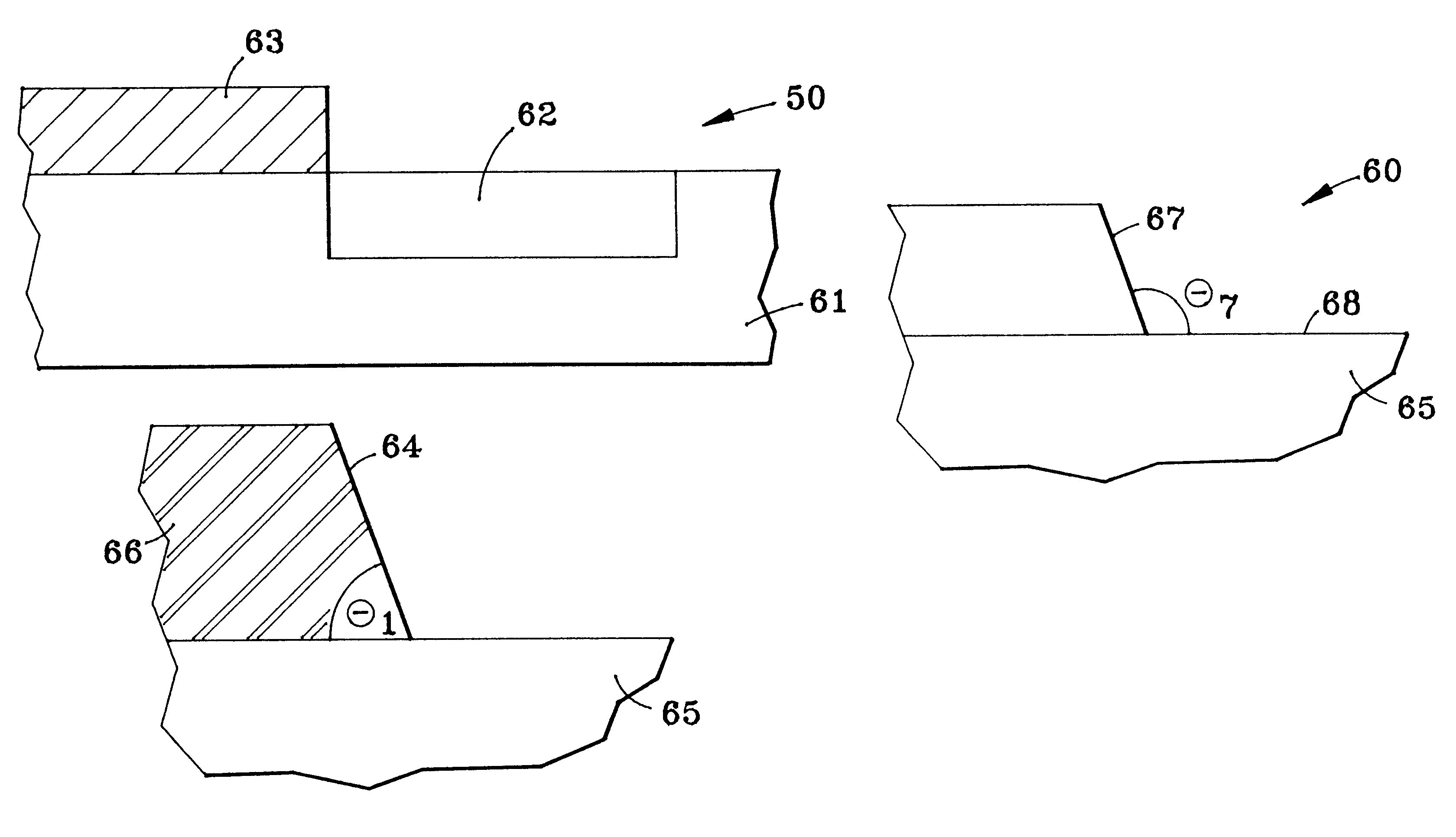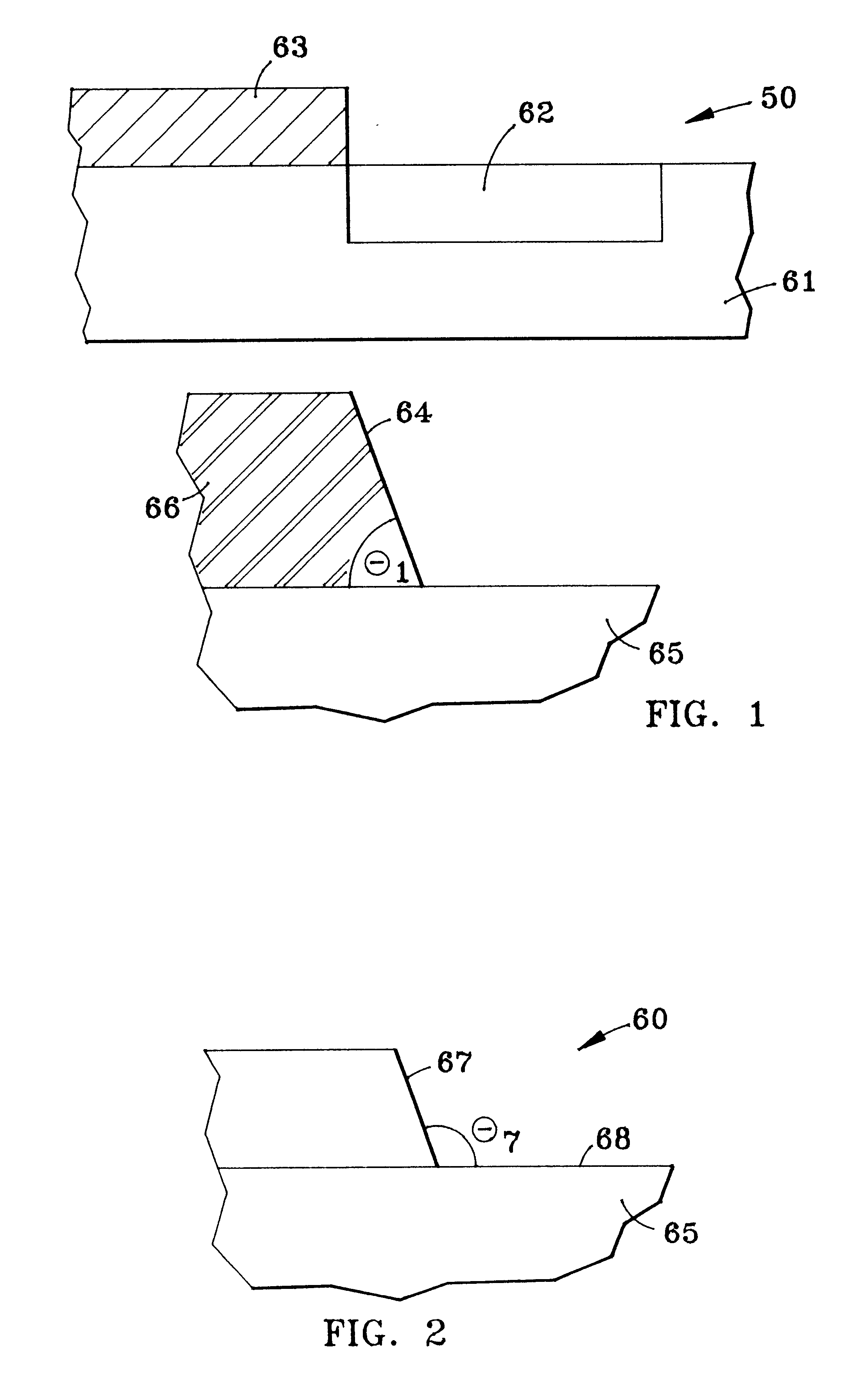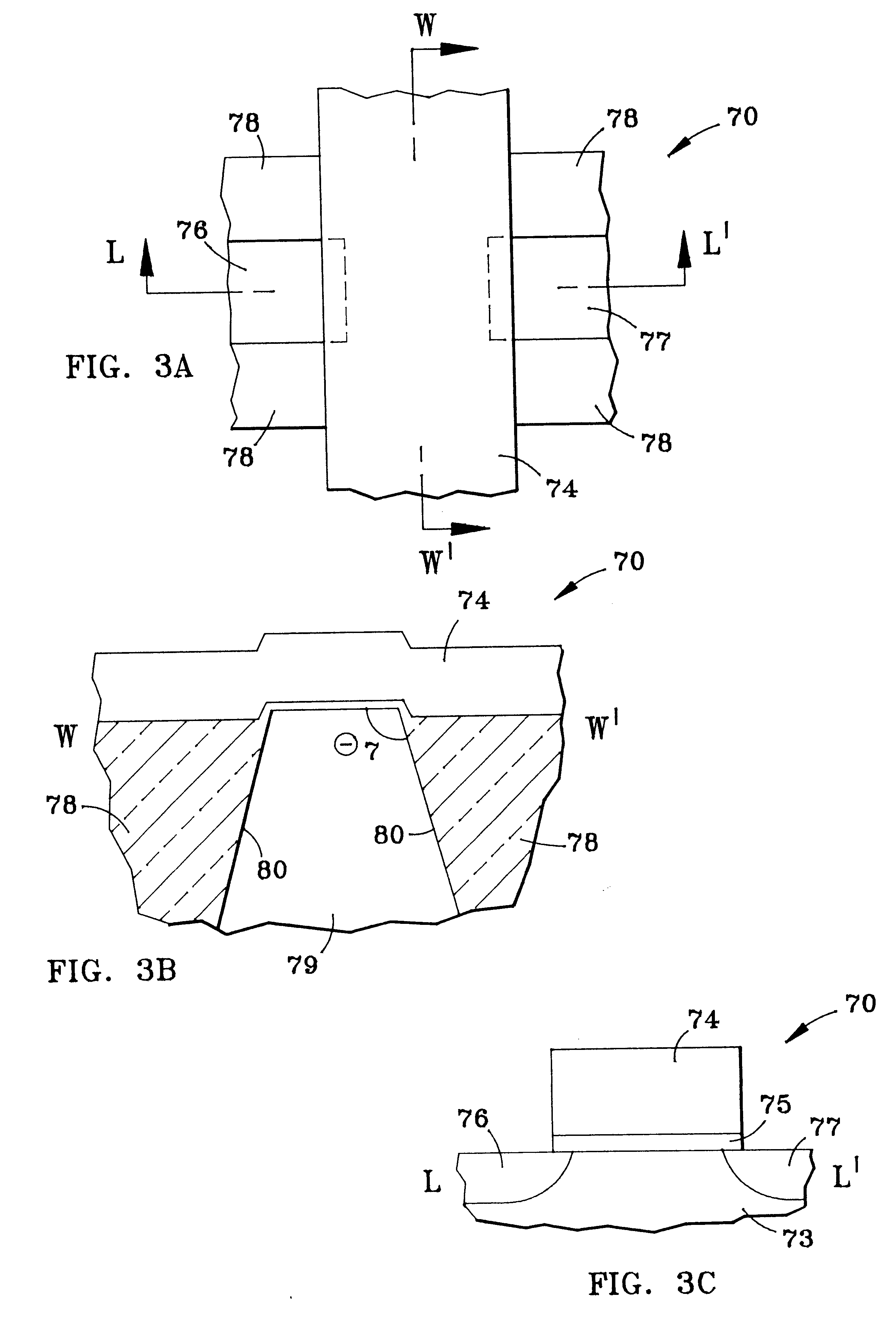Selective reduction of sidewall slope on isolation edge
a transistor and isolation edge technology, applied in semiconductor devices, instruments, photomechanical treatment, etc., can solve the problems of inability to meet the requirements of many manufacturing methods, non-flat wafers, and non-uniform bakes, so as to reduce device off-current and reduce sidewall slope
- Summary
- Abstract
- Description
- Claims
- Application Information
AI Technical Summary
Problems solved by technology
Method used
Image
Examples
Embodiment Construction
)
In describing the preferred embodiments of the present invention, reference will be made herein to FIGS. 1-9 of the drawings in which like numerals refer to like features of the invention. Features of the invention are not necessarily shown to scale in the drawings.
Polysilicon (also referred to as polycrystalline silicon) can be formed using chemical vapor deposition (CVD), or low pressure chemical vapor deposition (LPCVD), as well as other known processes. Polysilicon is a solid composed of a myriad of small single crystal regions.
FIGS. 1 and 2 together with FIGS. 4-8 are used to describe how the inventive structure shown in FIGS. 3A-3C can be made.
In FIG. 1, a cross section of special mask 50 is shown. This mask has a substrate 61 (e.g. glass), a chrome line 63 and a window 62 which was etched away. By etching away a certain thickness of the substrate 61 adjacent to the chrome 63, the phase shift of the light penetrating through the mask 50 can be controlled. Details of such mask...
PUM
 Login to View More
Login to View More Abstract
Description
Claims
Application Information
 Login to View More
Login to View More - R&D
- Intellectual Property
- Life Sciences
- Materials
- Tech Scout
- Unparalleled Data Quality
- Higher Quality Content
- 60% Fewer Hallucinations
Browse by: Latest US Patents, China's latest patents, Technical Efficacy Thesaurus, Application Domain, Technology Topic, Popular Technical Reports.
© 2025 PatSnap. All rights reserved.Legal|Privacy policy|Modern Slavery Act Transparency Statement|Sitemap|About US| Contact US: help@patsnap.com



